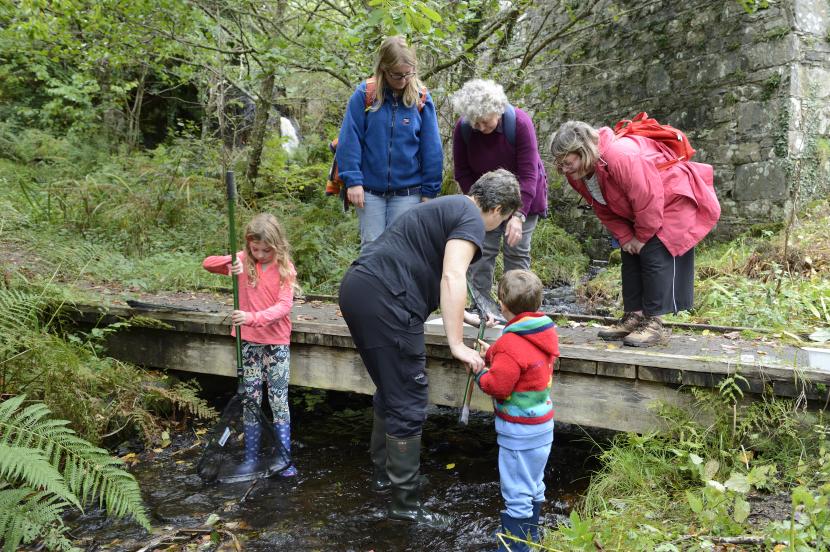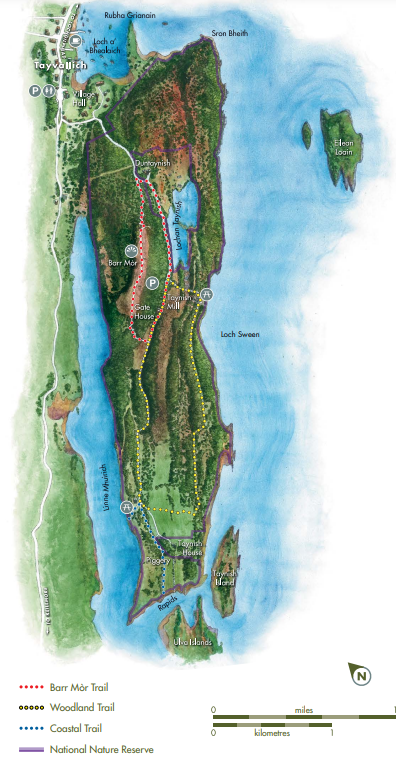Taynish NNR - visiting the reserve leaflet
Welcome to Taynish National Nature Reserve
In winter, old man’s beard turns the woodland grey-green while holly berries provide spots of colour.
Palette of the seasons
The leafless birches add a purplish tinge to many shades of brown. Spring brings white wood anemones, the unforgettable haze of bluebells and yellow primroses
In summer, you’ll be dazzled by dragonflies and enchanted by up to 20 kinds of butterflies, including the threatened marsh fritillary. Lots of other insects feed on the plants and dead wood. Autumn is vibrant with the ochres, russets, reds and browns of oak, birch, willow, hazel and alder.
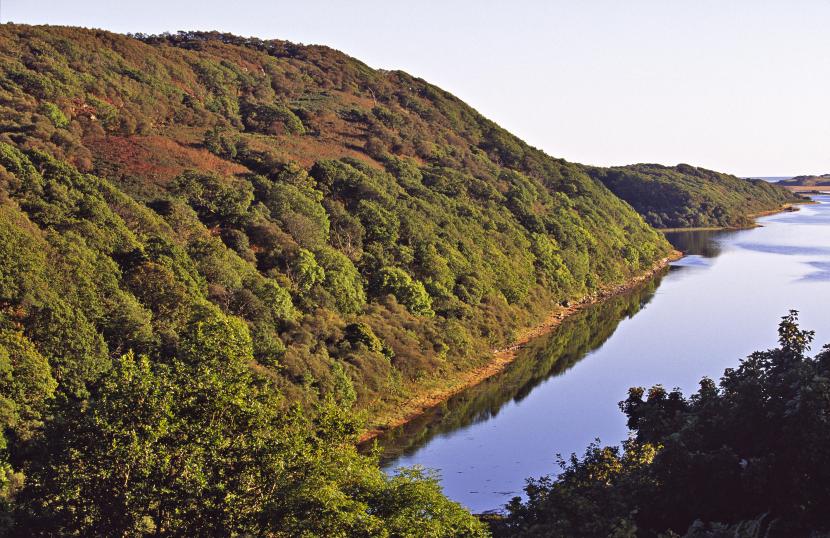
Birds in song and silence
Birdspotting is easy here! Some birds are resident, such as the soaring buzzard and the great spotted woodpecker, but redstart and wood warbler arrive in spring. By May, there are lots of resident wrens and migrant willow warblers, and the woodlands are alive with song.
Helping nature do the work
Eleven thousand years ago, Ice Age glaciers scoured Loch Sween and Linne Mhuirich. Birch, juniper, hazel and willow colonised the land after the ice melted, followed by alder, holly and oak. However the woodlands are now called ‘semi natural’ because they were managed, in various ways, through the ages.
To help the woods keep their near-natural character and rich wildlife, NatureScot is encouraging the spread of native trees by controlling deer, which browse on young trees. We’re also removing invasive non-native species like rhododendron and beech which crowd out native plants. Cattle still graze here as they have since the Iron Age, keeping meadows rich with flowers and butterflies.
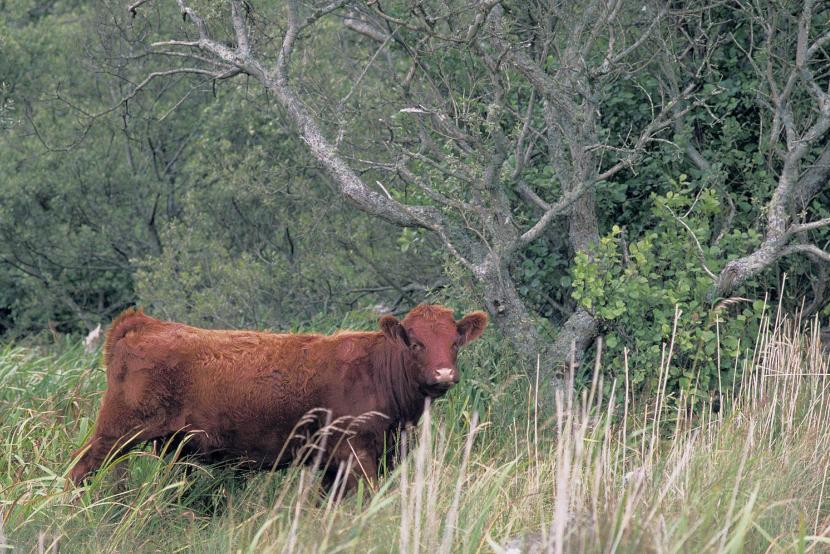
Getting to Taynish
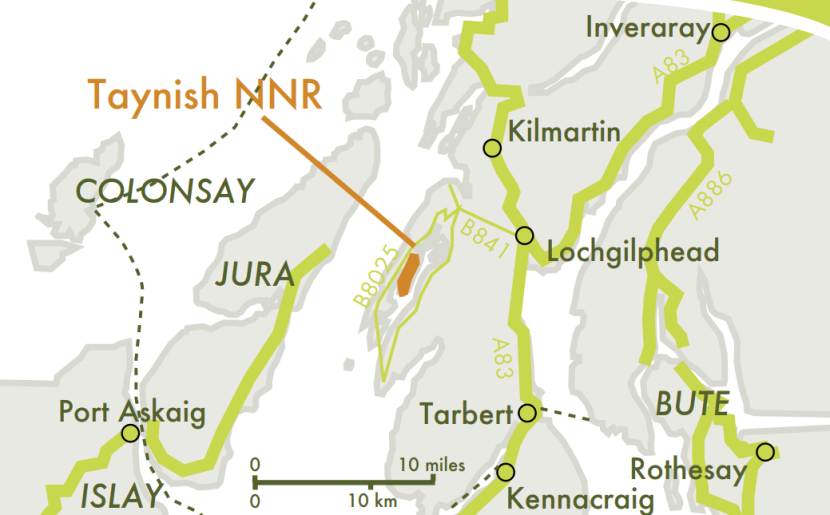
For more information please contact:
NatureScot
Kilmory Industrial Estate
Lochgilphead
Argyll
PA31 8RR
- Telephone: 0131 316 2690
- Email: [email protected]
- www.nature.scot/donate-nnr

More than trees
The peninsula of Taynish has shoreline, grassland, scrub, bog, heath and woodland, each of which is home to a host of plants, insects, birds and mammals.
Otters live on the Reserve, building their holts (resting places) in banks among the trees, and you can sometimes see them around the coastline, fishing and tumbling with great skill. You might also glimpse a shy roe deer in the woods.
Masses of mosses, lots of lichens
Taynish’s clean, humid air attracts many types of fern as well as the mosses, liverworts and lichens that often go unnoticed. Their variety and abundance add to the Reserve’s importance.
Look for patches of filmy fern growing on trees and rocks - it’s almost transparent. The most obvious lichens growing on the oak trees are old man’s beard - which is easy to recognise - and lungwort.
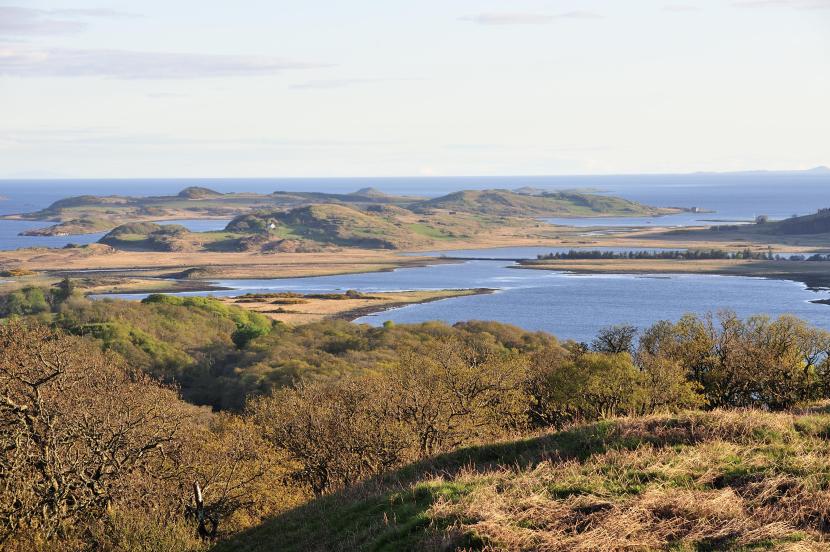
Exploring Taynish
Explore the woodlands by following the Woodland Trail (5km), a mostly level and well surfaced route around this remarkable northern “rainforest”. It includes a path to Taynish Mill picnic area and shore (400m) which is wide, well surfaced and barrier free with a slope (1:12) at the end.
If you are feeling more energetic, the Barr Mòr Trail (3km) is strenuous with some steep climbs, but it gives you a great view from the top.
Explore the coastal area by following the Coastal Trails (100m and 1km) which take you down to the southern shore on mostly level and well surfaced paths.
Cyclists are also welcome and there is a bike rack by the sheds 2km beyond the car park.
Enjoy Taynish as the hidden peninsula that you discovered. You can find out more about the history and wildlife of Taynish by picking up a Trails leaflet and stopping at the interpretation points around the Trails.
Reserve map

